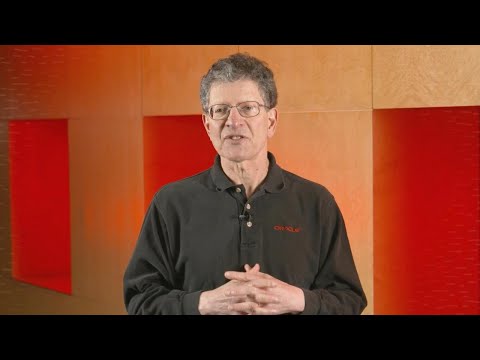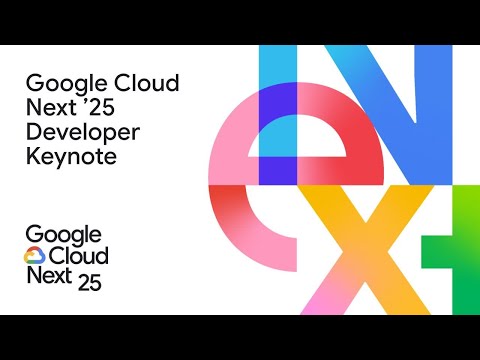Oracle Live: New Autonomous Data Warehouse Innovations

ANDY MENDELSOHN: Hi. I'm Andy Mendelsohn, and I run Oracle Database Server Technologies. And I'm going to talk to you today about the latest enhancements to Autonomous Data Warehouse that really empower business innovators to get more value out of your data on the cloud.
OK, so the exciting news today is we're going to tell you about how we're expanding the vision of Autonomous Data Warehouse. So today anybody can build an Autonomous Data Warehouse at the push of a button in a couple minutes. And where we're going from there is we want to make it possible for anyone to also easily get their data into the Data Warehouse, and get value out of the data. So before we go into that, I wanted to step back and talk about the bigger picture of Autonomous Database at Oracle. Autonomous Data Warehouse, as I just mentioned, is one of a family of database services that we call Autonomous Database.
Autonomous Database came out about three years ago, and it is a radical change for those of you who have used Oracle Database technology in the past. Anyone, now, at the push of a button, can prevision powerful Oracle Database technology running on an exadata optimized infrastructure to do any kind of your workloads. It starts out with our Enterprise class Oracle Database software. It gives you high performance and scalability and availability. And we build using machine learning algorithms, all kinds of software around it to make it a self-driving system. And that's where the word "autonomous" comes from.
Just like autonomous vehicles, we have taken our database technology and made it self-driving. That means we provision it automatically for you at the push of a button. We upgrade it automatically for you. We patch it automatically for you. We tune it automatically for you. So it's truly a self-driving system.
And we uniquely have something we call true cloud elasticity. And we'll talk about this more in detail later, but the basic idea is you don't want to pay for anything you're not using in the cloud, and that's what gives you really low cost in a cloud. And finally, Autonomous Database is a very productive environment.
It's based on Oracle Database technology, which is a converged SQL database. And what that means is we are the smartphone of databases. Instead of having to deploy 15 different databases to get your job done, which is what is the experience of, like, Amazon, for example, we have one converged database that has the power of all those 15 databases at Amazon that'll let your developers build virtually any kind of data management application without having to fragment their data across 5, 10, whatever number of databases they need on Amazon to get their work done. And as I said, the big news today is we also are adding a whole bunch of self-service tools to make business analysts, developers, and data scientists more productive. And don't take my word for this that Autonomous Database is a pretty amazing service. Gartner has done a study of all the cloud databases that they recently published, and they looked at both operational use cases and analytical use cases.
And for the operational use cases, they looked at what we call Autonomous Transaction Processing, which is one of the Autonomous Database family members, and we were number 1 in all the operational use cases, whether it's transactions, augmented transactions, IoT kind of workloads, or operational intelligence workloads. And then they did the exact same thing and looked at Autonomous Data Warehouse, and looked at it compared to the other guys in the cloud. And again, we were first or second in every one of these use cases, and compared to those popular cloud-only data warehouses, we beat them in every use case. Autonomous Data Warehouse-- let me give you a little high-level explanation of what it is.
It deals with all those analytical use cases that Gartner was talking about. We do things like departmental data warehouses. We do enterprise scale data warehouses.
We do data lakes, where you're integrating together data in object stores with your data warehouse. And finally, we do data discovery and sandboxes for machine learning as well. So let's talk about why customers like Autonomous Data Warehouse. So on this slide-- we have thousands of customers. On this slide is listed a few of them.
And some of the key things to point out is, number 1, I talked about how Autonomous Database makes it easy for anyone, at the push of a button, to basically build out your Data Warehouse infrastructure, provision it, patch it, et cetera. And you see that in these customers. A couple of them report 90% of the administration around their data warehousing was eliminated-- 90%. Pretty amazing.
And then they're getting lots of business value out of their Autonomous Data Warehouse as well. You see, here, Sky, for example-- 90% reduction in time to market for building their applications using Autonomous Data Warehouse. You see 10% reduction in fraud detection using our machine learning to do real-time scoring, thousands of concurrent users. Our technology's incredibly scalable. You can get thousands of concurrent users at the push of a button.
IDC interviewed a lot of these customers as well, and they project an average five-year return on investment of 417% using Autonomous Data Warehouse, and a break-even on their investment in just five months. Pretty impressive. Just get a little more detail, here. I talked, earlier, about our elastic scaling in Autonomous Data Warehouse, and let me go into a little more detail in this, because this is an area where we are uniquely differentiated from the competition. So the competition, when you provision your Data Warehouse, asks you, provision a shape. They say, well, do you want 32 CPUs? That's one shape.
Maybe that doesn't work. If you need 33, well, the next shape is 64. You can't get 33. And so the whole premise of cloud is pay for what you use, but the other guys are making you prevision shapes. And so if you need 33 CPUs, they say, well, next size is 64.
You got to pay for all 64 CPUs. We don't do that. We say, OK, you want 33? No problem.
Here's 33. You want 34? Here's 34. You just pay for what you need. You're not constrained by these T-shirt shapes that the other vendors use, and this is what gives you lowest cost. And with Oracle, if you want to grow your shape-- grow the number of CPUs-- no problem. You just go online and change it.
There is no downtime, no notice-- no one will notice any change at all, just better performance. And beyond that, we have a capability called auto-scaling which is very unique. So you give us the baseline of what your normal everyday workload is-- say, 30 CPUs-- and we will automatically, based on your actual workload, deal with spikes in the workload to scale you up up to three times that-- say, 90 CPUs-- just for the period of time when you need that. So you will do that, and then as your workload goes back to normal, we'll bring you back down to the 30 CPUs, and you just pay for what you use. The other guys can't do that.
Number 1, they require you to create or tell them how many extra clusters to create. It's very difficult to size, and you need IT expertise to figure out how to do that. And then when they scale, your system either goes down for short periods of time, and goes read-only in other periods of time, and other times it just doesn't respond very well because these extra clusters they're spinning up need to be warmed, and the data needs to be loaded in.
You get none of that with our auto-scaling capability. It just is instantaneous, completely transparent to your users. One of the things customers really like is just the rich set of analytics we support. Everybody, of course, has powerful SQL analytics against structured data.
We go beyond that. We have built, into the system, powerful machine learning algorithms that let your data scientists do their data exploration and machine learning, model creation right in the database itself. You don't have to move the data to some other machine learning environment. We have built in things like spatial analytics. So what do I mean by that? Well, everybody wants to know about spatial data now. You all have a phone.
Your GPS is being tracked constantly. And so for business use, it's often use cases to find-- for example, in the retail space, find all the users within 50 miles of the store so I can send them targeted advertising. So spatial analysis combined with classical structure SQL analysis is a really important capability that customers like. And then new, we just added graph analytics here. For everybody else, if you want to understand the social networks of your customers or users in your business, you have to take that data from your data warehouse, move it into another service that does graph analytics. With Autonomous Data Warehouse, you don't have to do that.
You can now combine standard structural analysis, structured data analysis, spatial analysis, graph analysis, JSON data, et cetera. All that can be done in this one database, because we have what I mentioned earlier-- a converged database that converges all these technologies into one place so developers and analysts can easily analyze their data all in one fell swoop. And then we have, of course, powerful technologies for getting data into your data warehouse. One of the things I wanted to plug is Oracle has a very successful set of business applications called Fusion Analytics, which is our software as a service offering. And as part of that offering, we have an integration with ADW-- Autonomous Data Warehouse-- where you can get a pre-built data warehouse where data is constantly being moved from the production systems into the data warehouse through our Fusion ERP and HCM products, and we give you a pre-built warehouse and pre-built set of dashboards and analytics you can use to understand your data. Beyond that, of course, we have connectors that help you make it easy for you to extract data from a whole set of applications-- everything from-- I mentioned Fusion applications, NetSuite, E-Business Suite, PeopleSoft, Siebel, JD Edwards, SAP, Salesforce.
You name it, we got it. So we have very, very good integration into various data sources you want to get data from. Now let's hear from some Autonomous Data Warehouse customers.
[VIDEO PLAYBACK] LIESBETH MULDER: You know, people love data. And you can do a lot with data. Aon is a global leader in financial services, in risk, and retirement, and health. We help our clients to reduce volatility.
And those topics are very important nowadays in a global economy. We have a lot of different systems. And people had to go and look for about 60 places to get that data brought in together. It's very inefficient for our organization, but also not very customer-friendly. We chose Oracle CX to automate and modernize our sales and marketing processes. I initially built the dashboards for all the 12,000 users, but that was not sustainable.
We wanted to give people more flexibility. , Then we found Oracle Analytics Cloud and Autonomous Data Warehouse. And that was exactly what we needed. It was easy to set up.
And it doesn't need an IT team or a database administrator. 60 times better performance in complex queries saves us 15 hours a week, since we don't have to manually extract the data. We have enhanced security of confidential deal information. We are training our machine-learning models to predict the outcome of our opportunities.
Our sales teams can now easily visualize all the client history and activity. That makes them trustworthy. And it makes the relationship better. Everyone who looks at dashboards, they love it from the start. Most people in our organization said, wow, that's great. That's never been done before.
So that's a huge milestone. JAY WEILAND: We have incredible people who actually want to disrupt the entire transportation industry. They don't accept what has been, for the past 30 years, as good enough.
LISA BLACKWOOD-KAPRAL: In order to be competitive, it goes back to really needing real-time information for our business leaders and our decision makers. And it goes fast. JAY WEILAND: I like using the term "lightning in a bottle." As our business grew and millions of transactions turned into billions of transactions, we had to go up and scale. LISA BLACKWOOD-KAPRAL: We have decentralized systems.
Things are quite manual. And that affords opportunity for mistakes. So it's a true transformation at Lyft with the products that we're implementing. JAY WEILAND: Taking a look at the Oracle technology stack, it's almost like a parfait. You start to say, where is my data stored? It's the Autonomous Data Warehouse, ADW.
On top of that sits OAC. It's Oracle Analytic Cloud. What kind of insights we got were just absolutely amazing. LISA BLACKWOOD-KAPRAL: The world's going 1,000 miles an hour. For me to say, wait, I need another week, just doesn't work anymore. And Oracle is reimagining the financial systems footprint so that we can be more nimble and flexible for the future of the business.
ANDY MENDELSOHN: So what are we doing that's new and exciting around Autonomous Data Warehouse? So as I mentioned earlier, the big thing is we want to empower the innovators, the data analysts, the data scientists developers in your business to make it easier for them to get their value out of their data without needing any help from any other engineers or people in IT organization. First, let's look at the data analysts. What do they want to do? So as I mentioned earlier, after you after they press the button and provision the Autonomous Data, warehouse the next thing they want to do, of course, is load data into that data warehouse. And so we now have added tools to make it really easy for them to drag and drop data sitting in files or other data sources into the data warehouse.
We have tooling that makes it easy for them, in a declarative fashion, to specify transformations on their data, to cleanse their data, et cetera, again, to make it ready for analytics analysis. And we have a new way of looking at your data automatically and understanding if there is a multidimensional model there. And we'll automatically build out that model for you in a way that can be consumed by any of the standard business tools out there in the market like Tableau or Qlik as well as Oracle's Oracle Analytics Cloud tool.
And then finally, we will automatically sort of gain insights into your data. We'll look at your data, the statistical patterns of data. And we'll give you some interesting insights out of the box to help get you started when you're exploring new data sets. OK, so what about the data scientists? What are we doing for them? So they have the same start-up thing.
Once you provision the data warehouse, again, they want to load the data. And so they also are-- we can use these new tools we provide for a simple dragging and dropping data into your data warehouse. They can also use the tools for transformation-- the declarative tools for data transformations to help them prepare and transform data to get ready for building their data models. And then one of the exciting new things we have here is we have many machine-learning algorithms built into Autonomous Data warehouse already, all the popular ones for neural networks, et cetera.
But now we have AutoML. And AutoML let's anybody-- it makes a data scientist much more productive in building out their data models. But it makes anybody who is a developer or a data analyst into a citizen data scientist. You can just give us your data, tell us what kind of predictions you want, what are the columns that you think are the features you want to analyze to help the prediction, which of your data is maybe the predictive data points you're trying to look at. And we will automatically go through our collection of machine-learning algorithms for you, figure out which ones produce the best predictions, and give you a result out of the box without you having to be a PhD computer scientist. It's a pretty amazing tool.
And then finally, we have an integrated tool, a GUI that helps you deploy your machine-learning models. For developers, we've had for many years a tool called APEX available with our Oracle databases. That tool is also available with Autonomous Data Warehouse. It's integrated into the product. And again, anybody who's a citizen developer can use this low-code app dev tool to help you build applications 20 to 40 times faster than what you can do with hand coding.
One of the things we like to say now is coding should now be the exception, not the rule. And so pretty much anybody should be able to use APEX and build out very powerful web-based, browser-based applications that they deploy on their mobile phones, deploy on laptops, desktops at very high productivity levels. You see on the slide a picture of the kind of beautiful applications you can build using this tool.
We also have a great tool called REST Data Services that helps you integrate with either consume information from external REST data sources or actually build out REST interfaces on top of things like your APEX applications. OK, so with that, let's do a demonstration of all these new capabilities in Autonomous Data Warehouse. PATRICK WHEELER: I'm Patrick.
And it's my job to help you work with all your data as quickly and easily as possible. Self-service analytics has been a huge help to the business. And by pairing it with a self-service data warehouse based on Autonomous Data Warehouse, you can become self-reliant and reduce your dependence on IT. You can load CSV files and Excel files from your laptop or the cloud by simply dragging and dropping. You can use a GUI and no scripting to clean up and format data quickly or delete what you don't need. You can automatically create business models, identify areas for further analysis, and track data lineage.
Developers can create and deploy data-driven web pages, mobile, and enterprise apps 20 times faster with 100 times less code. Data scientists can use Python or SQL to build machine-learning models without moving data and then immediately deploy them. Analysts can model existing data as a graph using it to uncover communities, find influencers, and detect fraud. You can use your existing self-service tools to work with consistent data and collaborate with your extended team. Autonomous Data warehouse eliminates nearly all manual labor.
It tunes, scales, and updates without human intervention. This means that the line of business can now deploy and operate a self-service data warehouse without calling IT for help. ANDY MENDELSOHN: We have talked about up to this point all of the building capabilities in Autonomous Data Warehouse that make it easy for you to provision the data warehouse, get the data in, and do your analytics all within the confines of one simple service. However, I know a lot of you have lots of third-party tools you want to use as well with your Autonomous Data Warehouse data. We integrate with all of them.
Any of the popular third-party BI tools can be used. Oracle also has a great tool called Oracle Analytics Cloud that's part of our cloud service. And of course, all the data integration tools you might want to use, whether they're from Oracle, things like Golden Gate, Oracle Data Integrator, or tools from third parties like Informatic and IBM can also easily integrate into the Autonomous Data Warehouse environment. Also some of you might have want to run your applications or your tools in one cloud and connect to Autonomous Database over the internet. And we have, in particular, a partnership with Microsoft Azure to make it really easy to do that, where you can have your tools running on the Azure cloud connect into Autonomous Data Warehouse in a very simple way. And you can also easily get at data that you have not only in our cloud as a data source, but on premises or in third-party clouds.
And so for example, if you're building a data lake and you have lots of data in AWS object store, or Azure, or Google object store, or you can easily get at that data using powerful Oracle SQL technology to query that data, and look at it, and view it from your Autonomous Data Warehouse database. OK, so let's summarize what we talked about today. We first talked about how Autonomous Data Warehouse has thousands of customers and the value those customers are getting from the product. I mean, we saw some customers reducing their administrative costs by 90%.
We saw customers improving their fraud detection by 10%. We saw great return on investment from customers using Autonomous Data Warehouse. And then we talked about how we're taking Autonomous Data Warehouse to the next level.
We're bringing a new set of building tools and a new set of rich analytics to empower the data analysts, the data scientists, and line of business developers to more easily get value out of their data. And what we have is very differentiated from the other cloud data warehouses out there on the market. You know, everybody supports all the popular third-party tools for reading their data. Everybody supports massively parallel SQL query against your structured data, but we have a lot of unique capabilities. We have these new self-service tools I talked about for our data analysts. We have things like AutoML for the data scientists and all the self-service data-loading tools as well.
We have the self-service tools for developers like APEX. These are very unique. Nobody else has anything like this out there in the market.
We have, as I said, a converged SQL database that combines standard SQL query against structured data with querying against graph data, spatial data, JSON data. We have machine-learning integrated into that environment as well. Nobody else can do that. We have comprehensive data security beyond the basic table stakes of encrypting data and auditing.
We have these unique capabilities for identifying sensitive data, masking that data, making sure your users have the least privilege, et cetera. And then finally, the last two points, we talked a lot about auto-scaling. It's a very unique capability that lets you pay for just what you use. If you need 37 CPUs, that's what you should pay for.
You shouldn't have to pay for the next biggest shape of 64 CPUs, which is what's required by the other guys in the market. And also very uniquely, our technology, Autonomous Data Warehouse, is not only available in public clouds. It's also available via a facility we call Cloud at Customer to run in your data center. And with that, thanks for coming. And let me welcome you to take a look at our oracle.com website,
where you can learn more about Autonomous Data Warehouse. And especially, I encourage you to try the Get Started with Autonomous Data Warehouse, where we let you get your hands on the product, and try it out, and see for yourself if it's as easy to use as what I'm saying here today. Thank you.
2021-03-22 20:51


